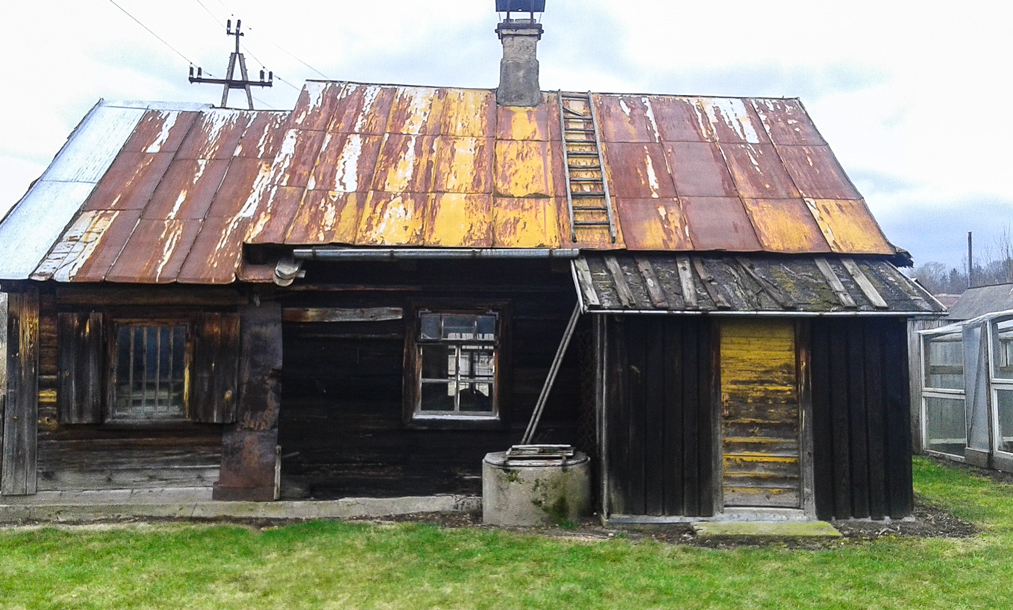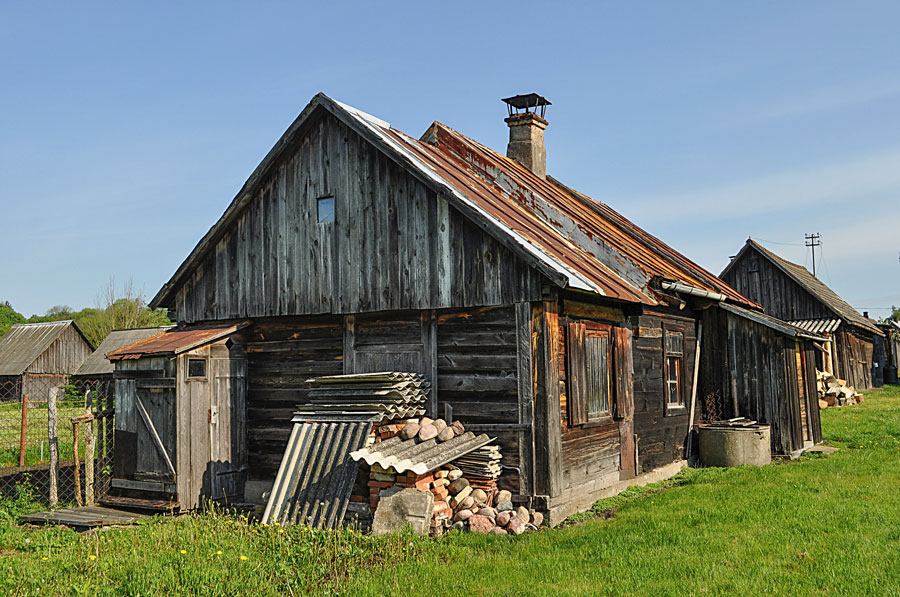The Bath house
In the whole complex together with the synagogue was a mikvah building – the bath-house, located on the other side of the road running from Stoczek towards the river. [t/n: All of the locals refer to the building as to “the Bath House” in their testimonies]
Jan Sawicki, who lived next to the synagogue recalls: "There was a bath-house behind the synagogue, build there especially so the Jews could bathe there. The building was small, with a focal point where they threw rocks and poured them with water; bunk benches, and they would go to these benches, with special birchen whisks. In the pre-war period the bath-house was only open for the Jews. It was run by one Bajko. From the west side there was an access road to these buildings, up till the bath. You could also access the synagogue, and the school" [1].
Bolesław Rychter also remembers the mikvah behind the synagogue [2]. Zina Buszko remembers, that her father used to take her brother there sometimes, and claims that „Jews never went there, this was a bath-house for the goy” [3]. The bath-house for sure belonged to the Jews, as it was located just next to the synagogue and the Jewish school; and information from Jakub Churs about his rental of the square to the Jewish community [6]. Perhaps not only Jews used the bath-house, it could be opened to other citizens as well. That's how Nina Szpakowicz remembers it [7].
There is no clarity about who was the one to manage the bath-house. From Jan Sawicki's testimony we learn, that it was run by „one Bajko (there is a big, Eastern-Orthodox family of Bajko in Białowieża) [1], but the chronicler of Białowieża, Piotr Bajko notes based on the inhabitants stories, that the bath-house was ran by an Jewish invalid Berko [4].
During the German occupation, there was a soap house in the building [1; 5]. The soap had such an intensive scent, that the mum of Jan Sawicki was often leaving her house to do the laundry outside.
After the war (or perhaps during), in the building of the old mykvah, an blacksmith Edward Wysokiński renovated the place, and moved in it, together with his forge. In 1954 he formed an appeal to the Poviat National Council regarding the selling of the building, receiving an answer that the Council doesn't dispose of post-Jewish properties. Two years later, Jakub Churs came forward with the same appeal to the Department of Agriculture and Forestry of the Poviat National Council, claiming that the bath-house was built on his ground. As he wrote in the claim: „The square was rented by the council of the Jewish temple for a stated yearly fee, as I possess the rental documents. The rent was paid on time every year, till the German occupation. During the occupation, Edward Wysokiński moved his forge next to the bath-house, and himself moved into the bath-house, and I had never received any rental money from him.”. The Department of Agriculture and Forestry of the Poviat National Council directed him to the Administration of Municipal and Urban engineering [6]. We don't know how did the situation end.
The building of the Jewish mykvah survived till today. It stands unused, in an unmodified exterior shape on a private square. The current owner plans to modify it for a small tourist house.




